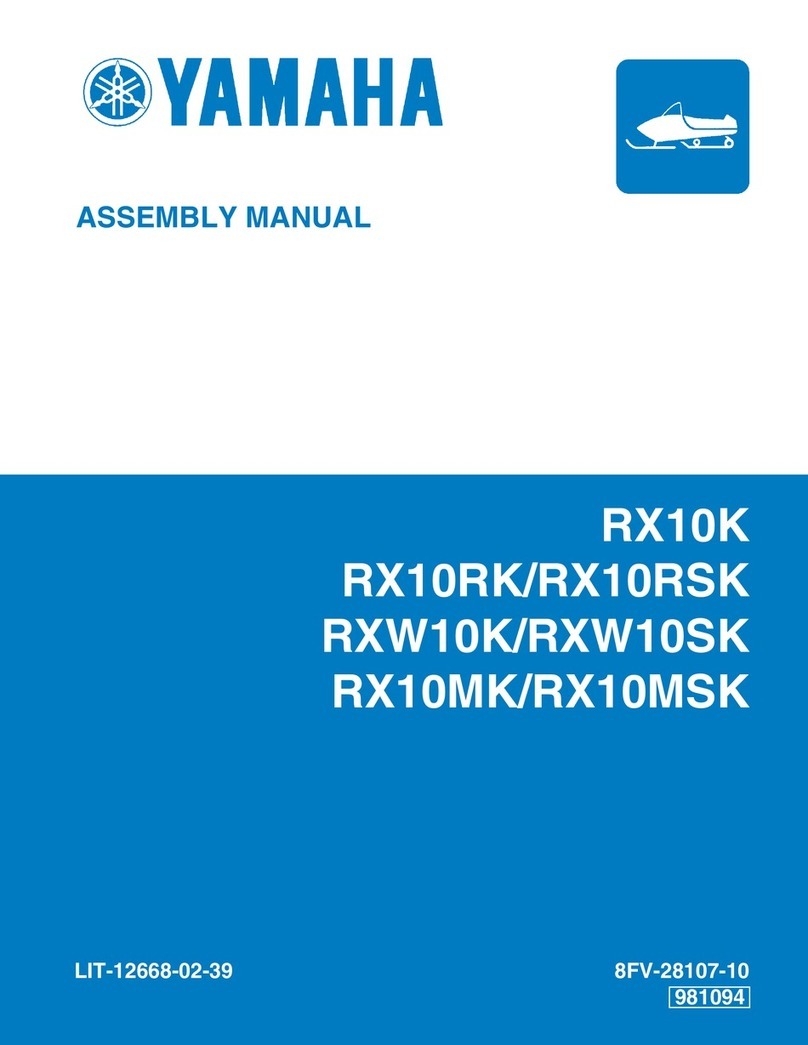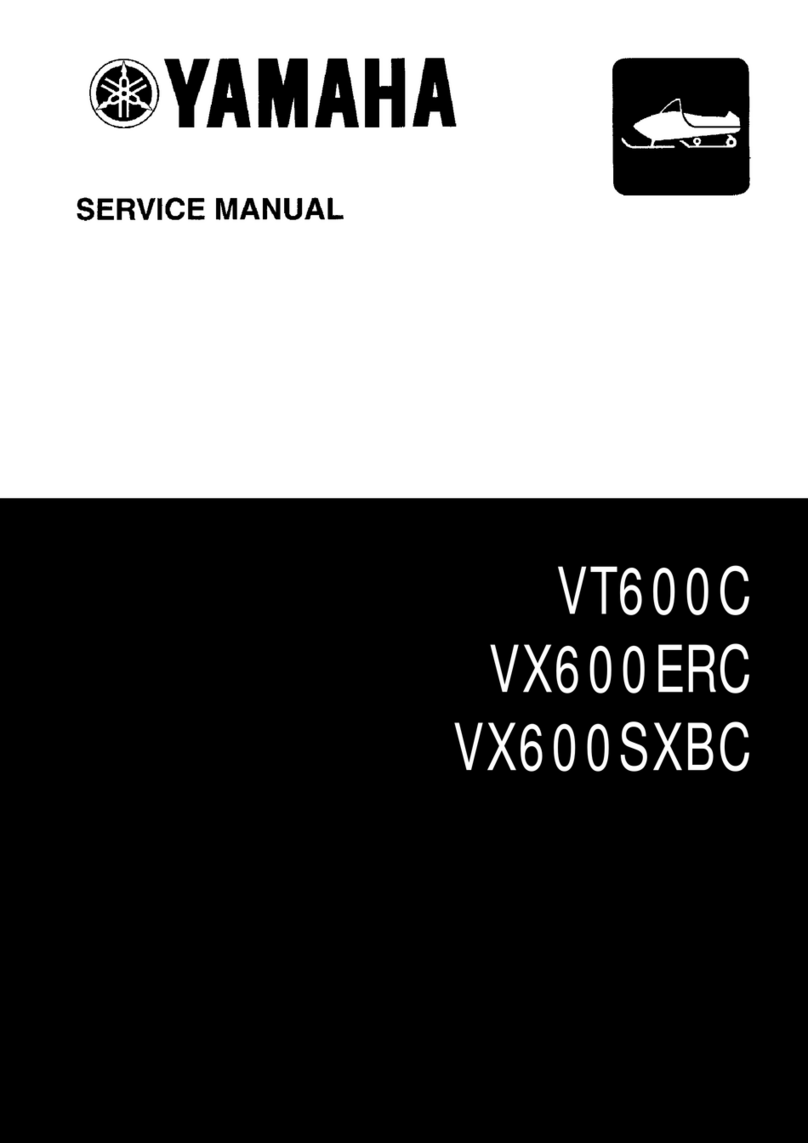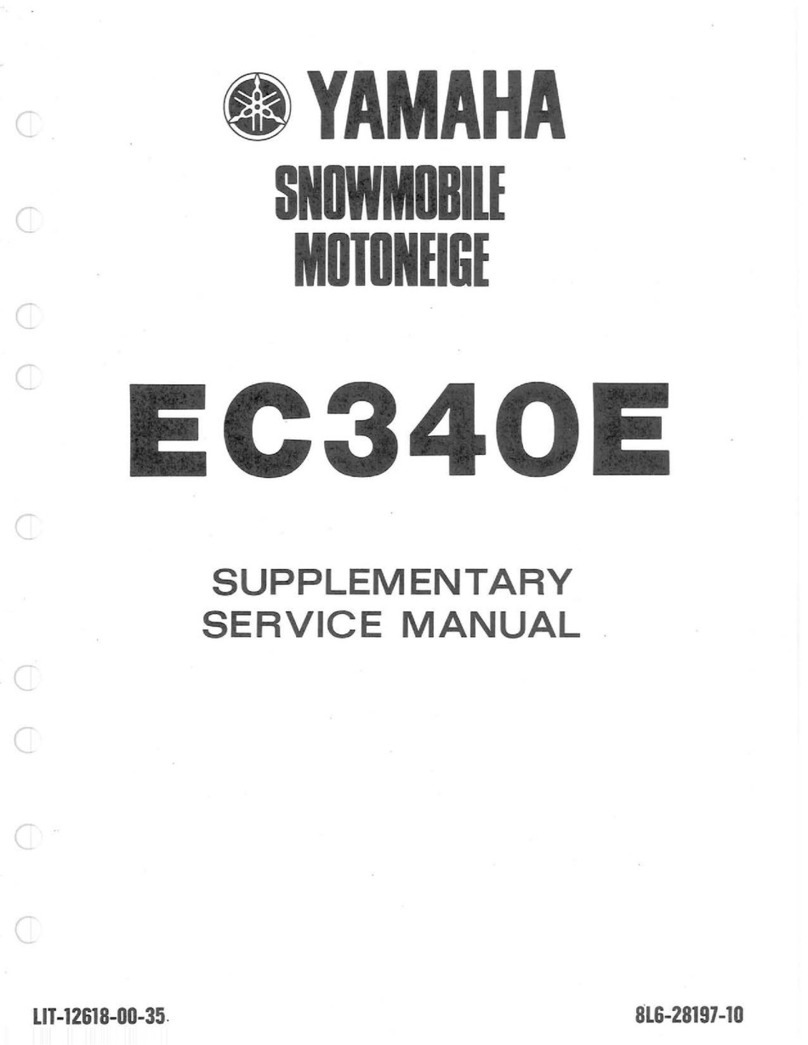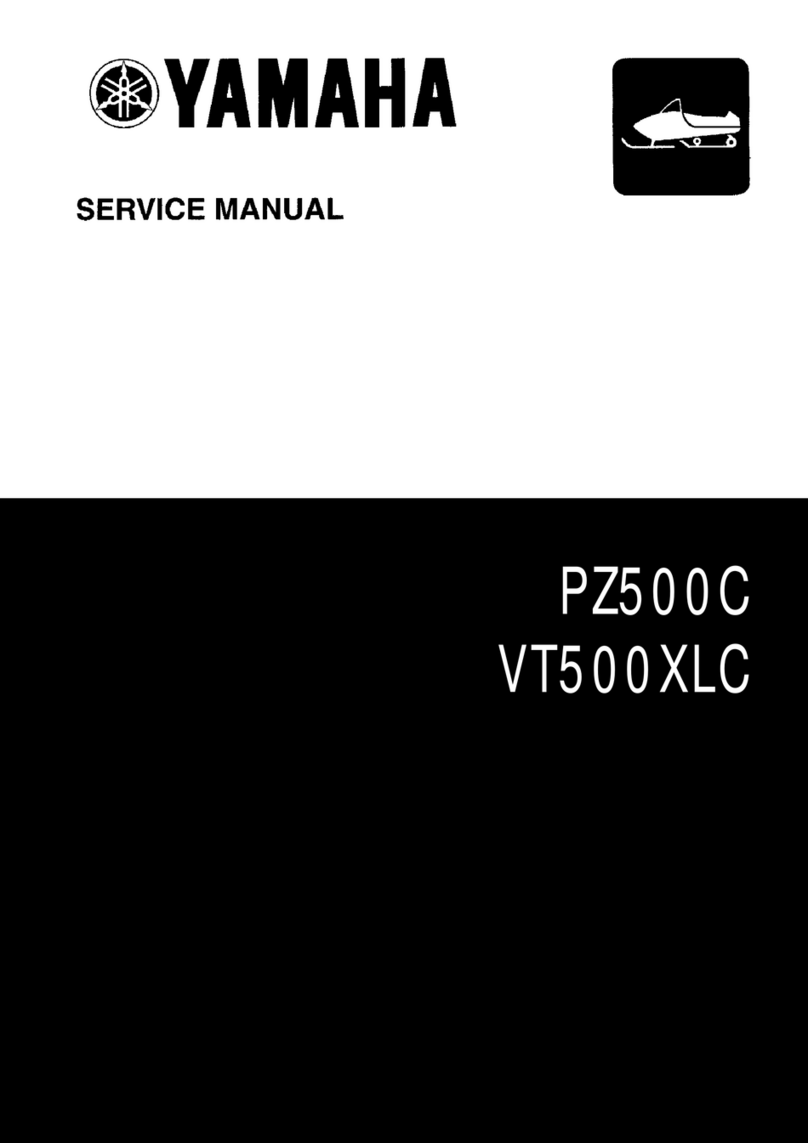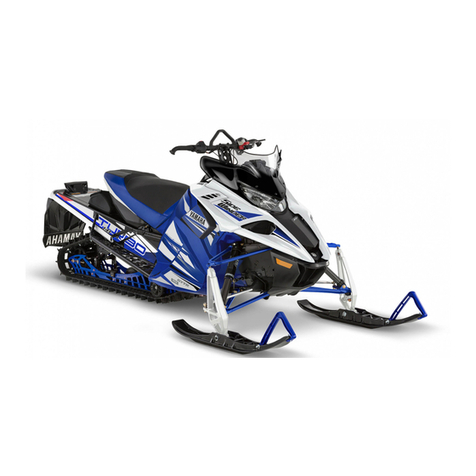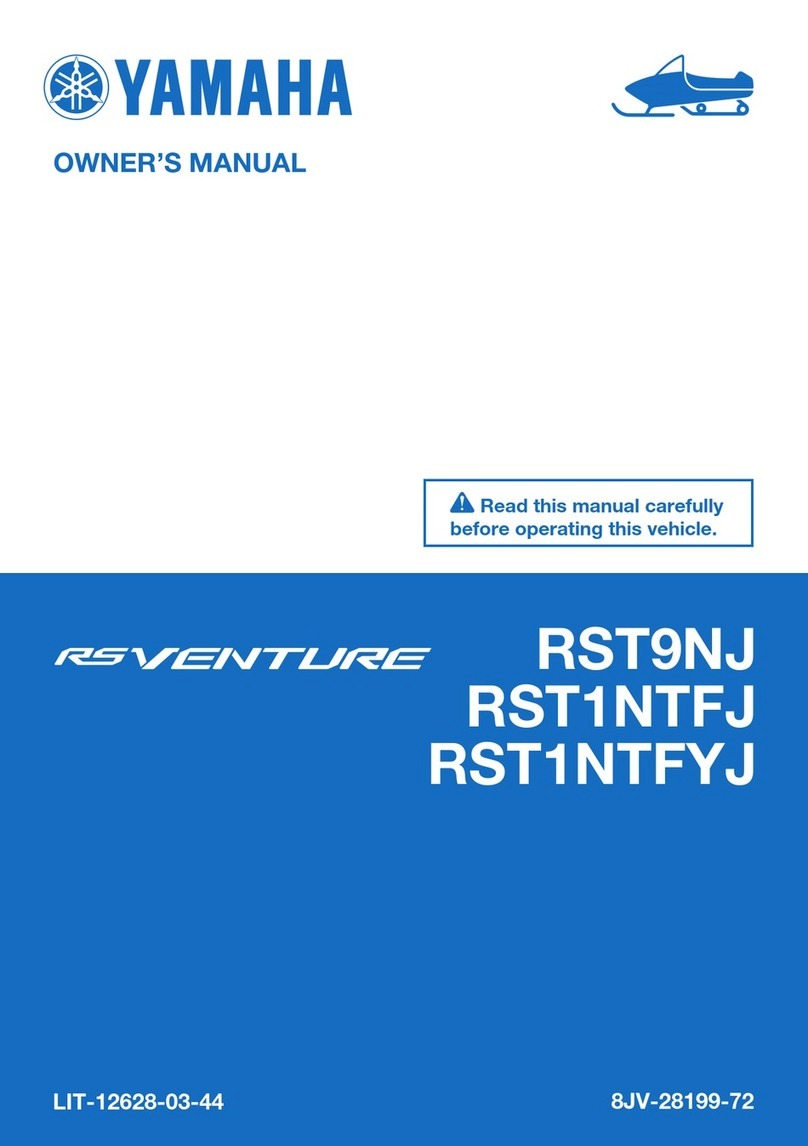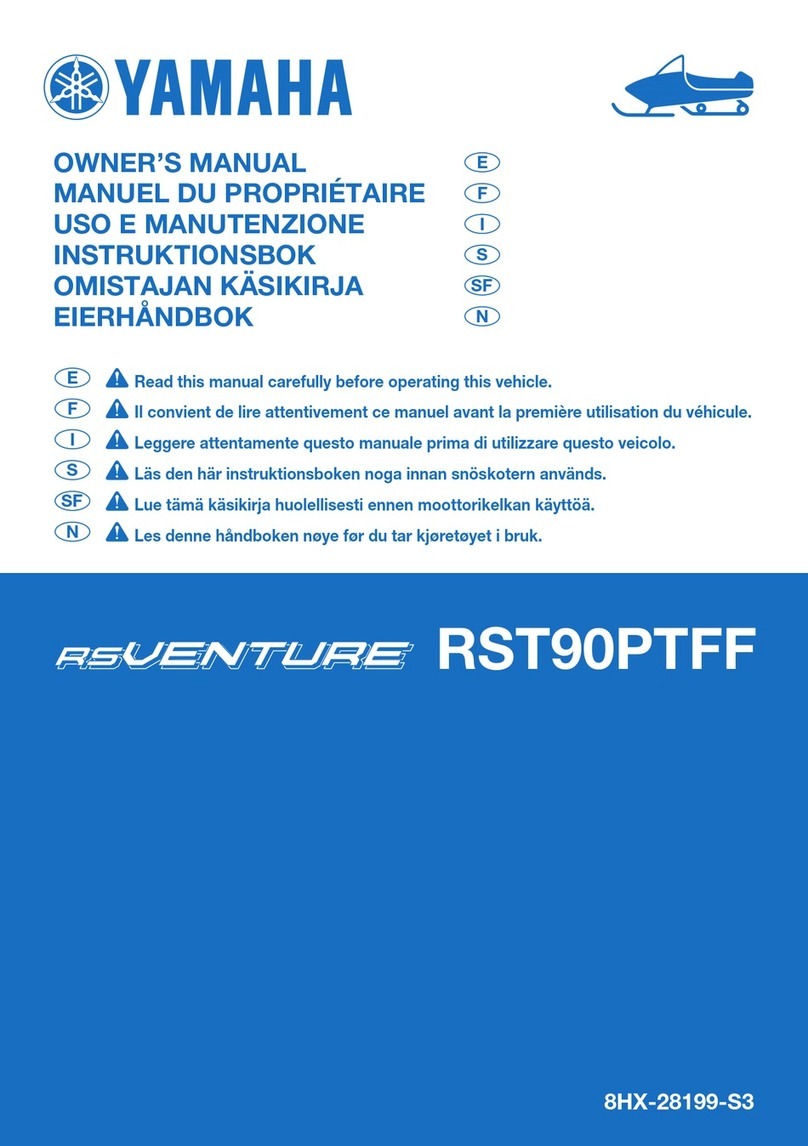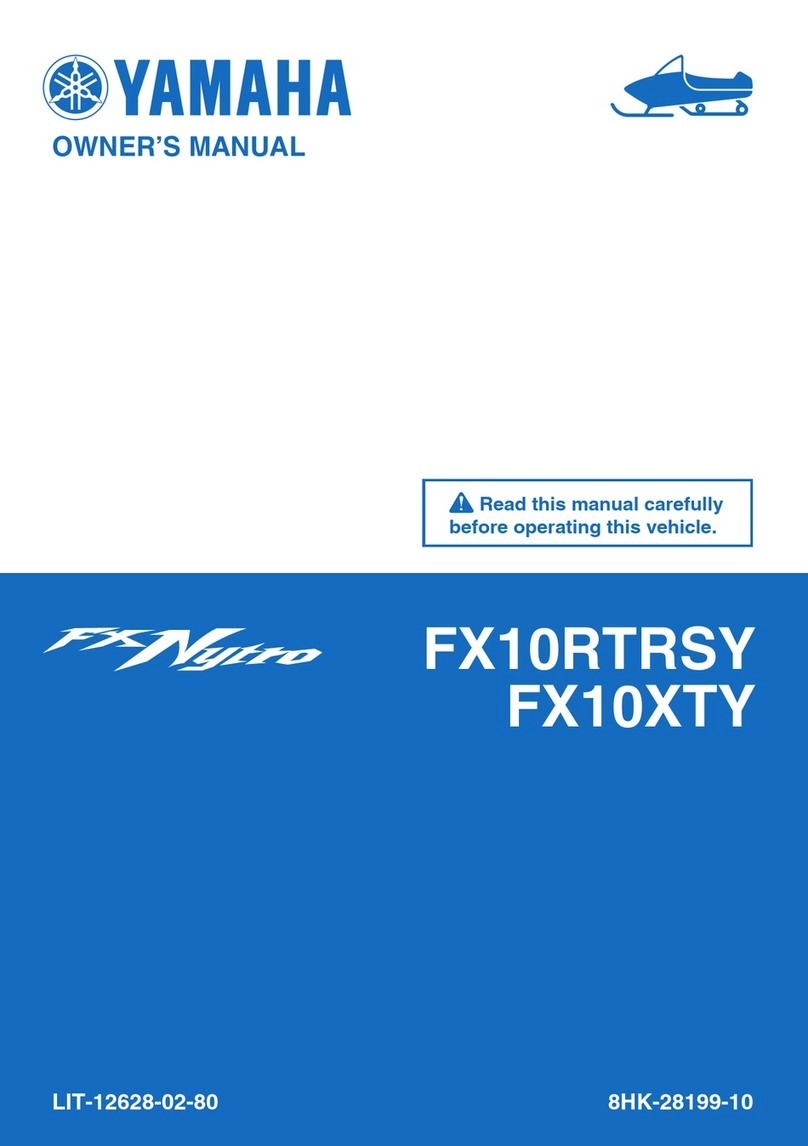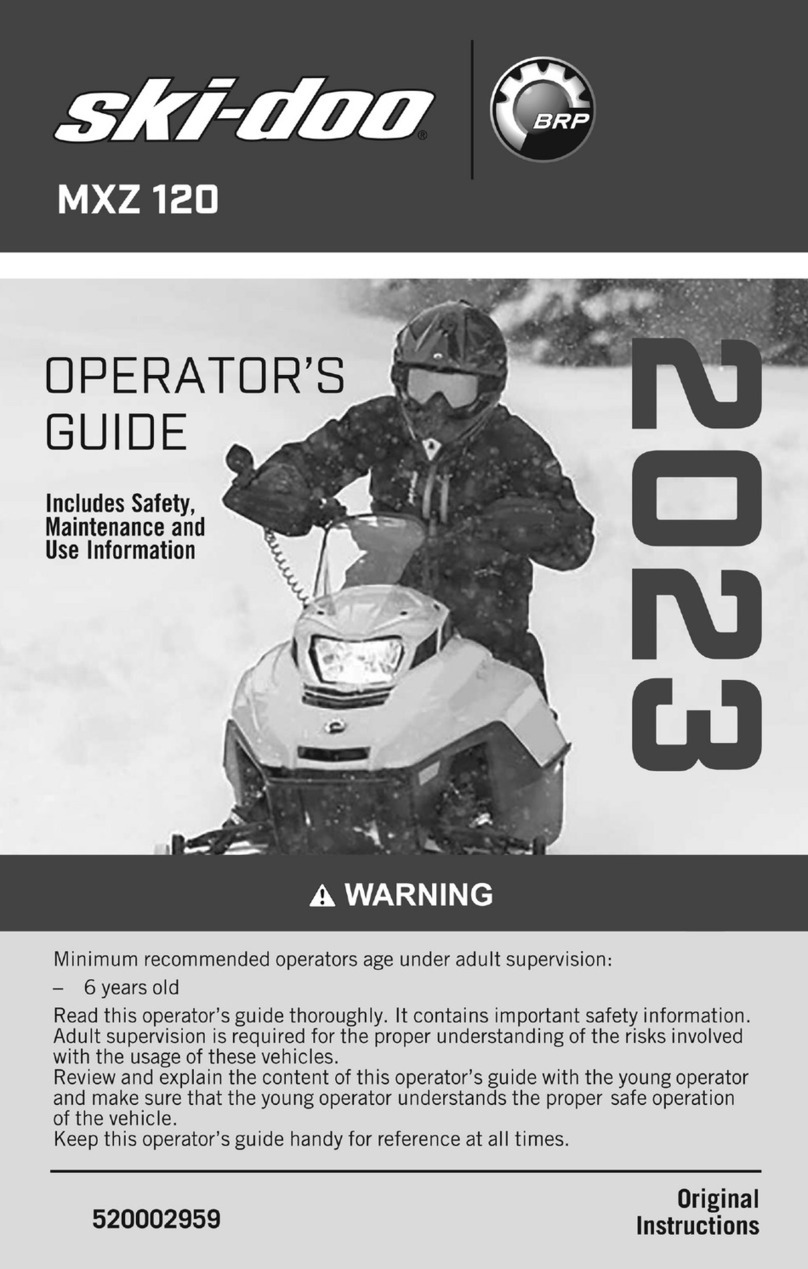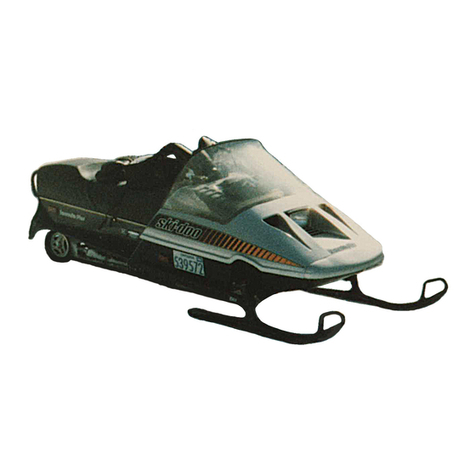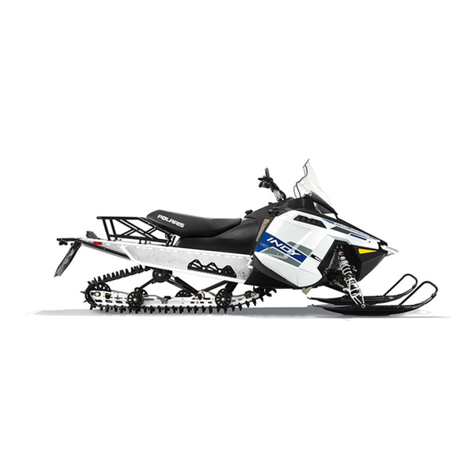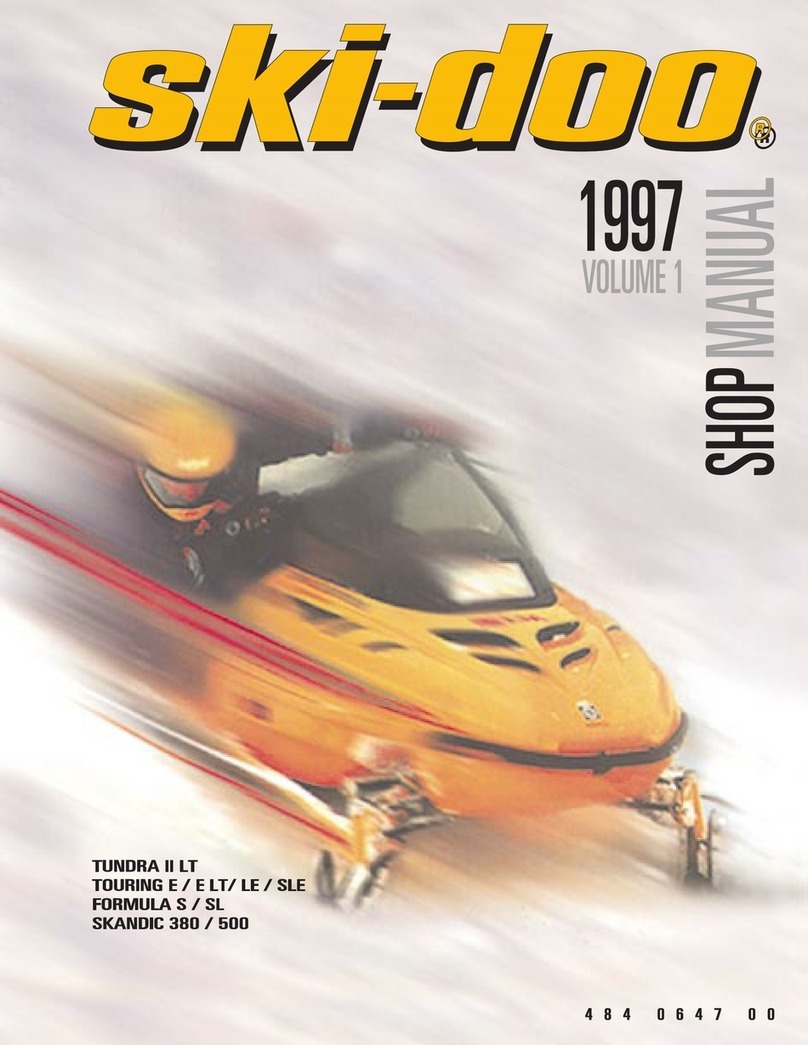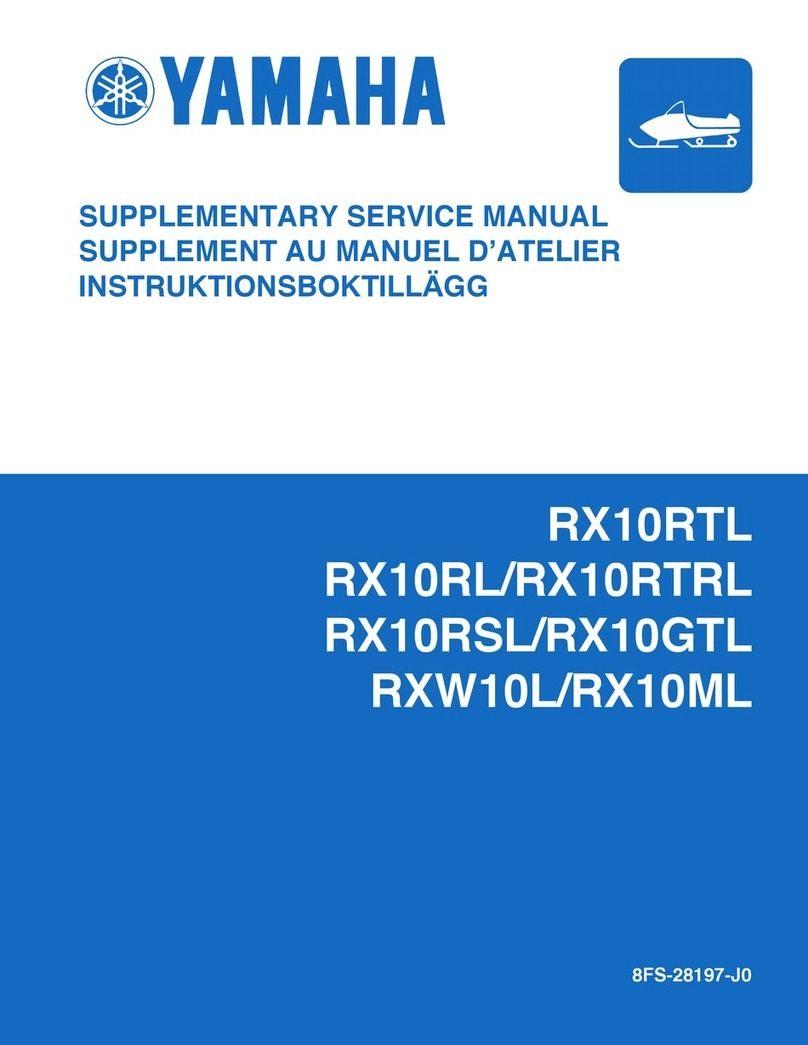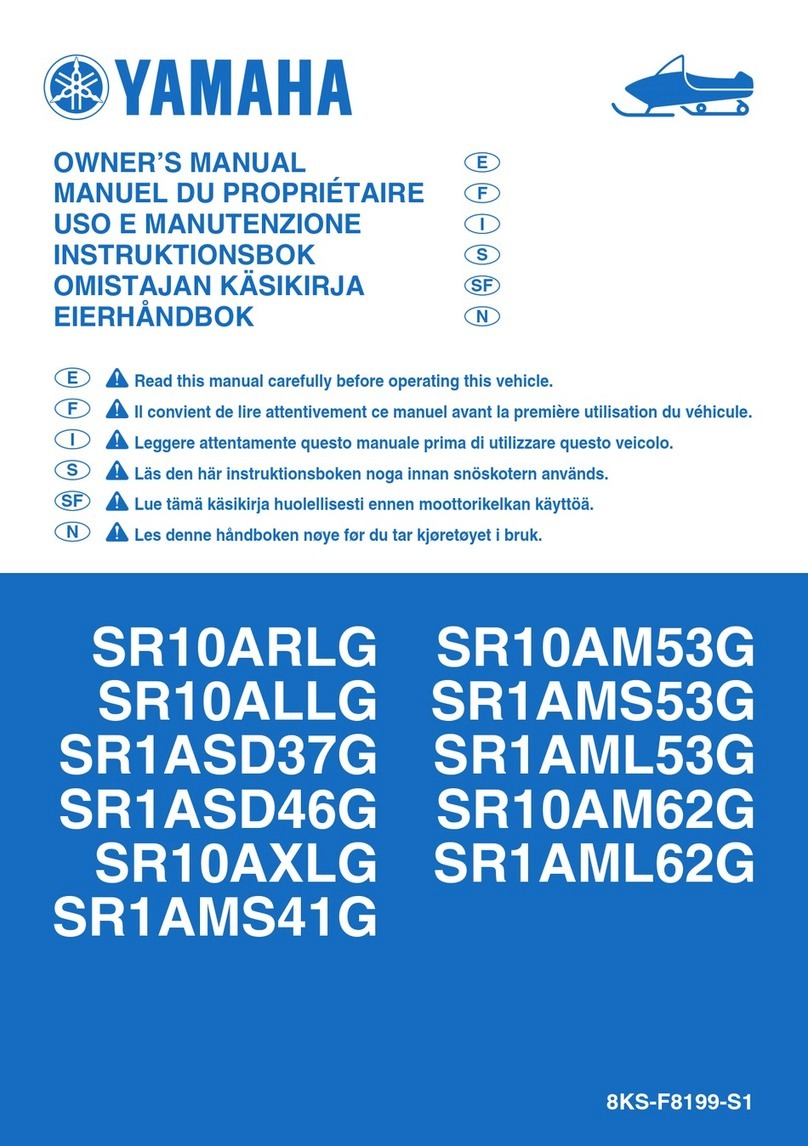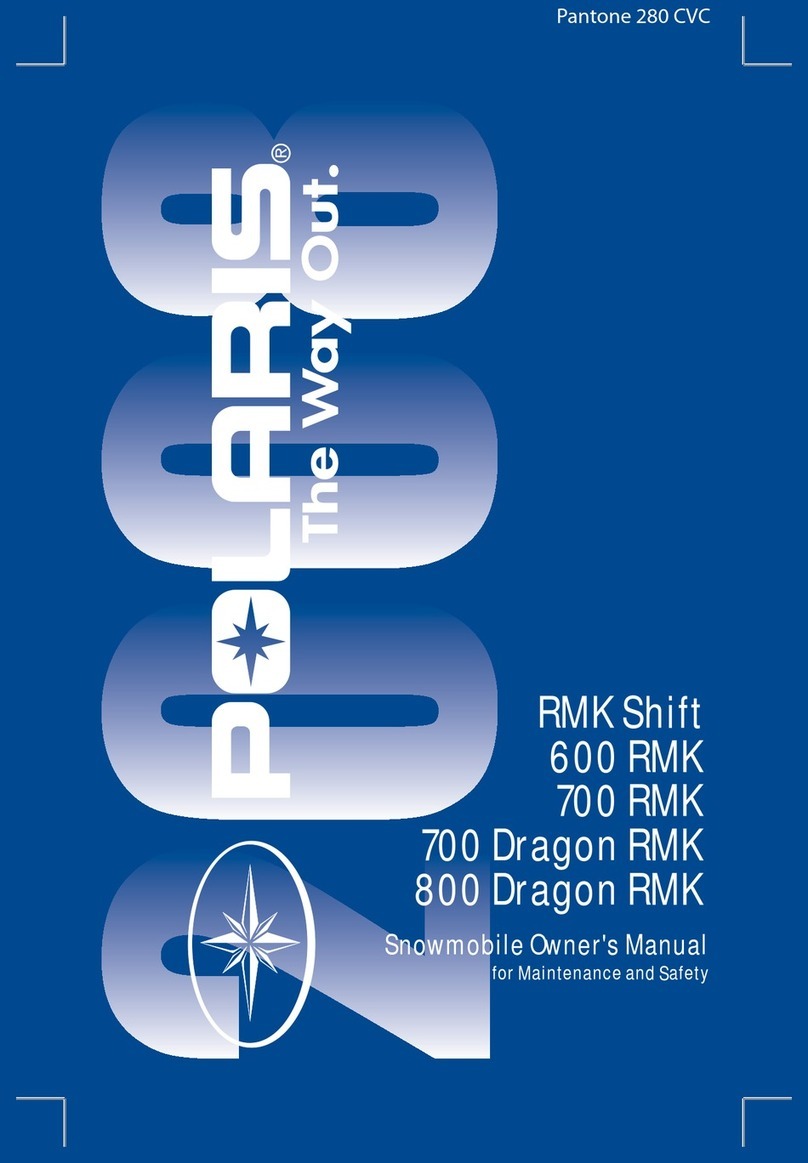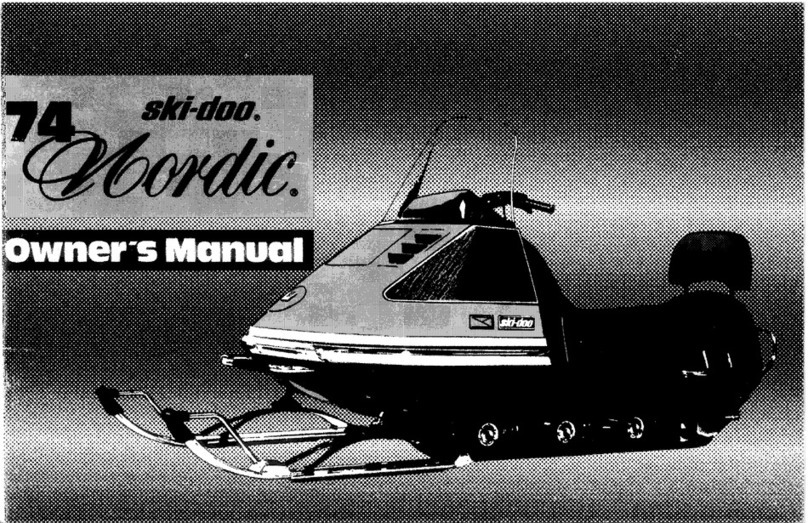
6
F. Fuel Level Display
This display shows the approximate
amount of gas remaining in the gas tank.
G. RPM/Speed/Clock/
Altimeter
Press the Upper Left Button to cycle the
left screen between RPM and speed.
NOTE: When RPM is displayed on
the left screen, the right screen will
display speed, clock, or altimeter.
When speed is displayed on the left
screen, the right screen will display
RPM, clock, or altimeter.
Press the Upper Right Button to cycle the
right screen between speed, RPM, clock,
and altimeter.
Press and hold the Upper Button on the
speed-side of the gauge to shift the gauge
between standard (MPH/miles/Fahren-
heit) and metric (km/h/kilometers/Cel-
sius) modes.
Press and hold the Upper Button on the
RPM-side of the gauge to view maxi-
mum RPM. This value is reset each time
the ignition key is turned off.
With the clock mode selected by pressing
the Upper Right Button, press and hold
the Upper Right Button to set the clock.
The option of selecting the 12-hour or
24-hour clock is available; press the
either Left Button to alternate between
the two modes. Next, press the Lower
Right Button to set the clock. Press either
Left Button to set the hours; then press
the Lower Right Button to set the min-
utes. Press either Left Button to set the
minutes. When the proper time has been
set, press the Lower Right Button to
return to the main gauge display.
With the altimeter mode selected by
pressing the Upper Right Button, press
and hold the Upper Right Button to set
the current altitude by using either Left
Button. When the proper altitude has
been set, press the Lower Right Button to
return to the main gauge display.
H. Engine Hour Meter/
Odometer/Trip Meter/
Clock
This display shows engine hours, odome-
ter, trip meter, or clock. Press the Lower
Right Button to change which parameter
is being displayed. The Engine Hour
Meter and Odometer cannot be reset. To
reset the trip meter, select the Trip Meter;
then press and hold the Lower Right But-
ton until the trip meter display reads 0.
NOTE: The clock can only be dis-
played in this position if it is not
already being displayed in the main
right screen. To set the clock when
the clock is in this position, press
and hold the Lower Right Button;
then use the procedure found in G.
Diagnostic Codes
Diagnostic codes are activated by the
ECM and may be displayed on the read-
out screen for a number of reasons.
If a code is displayed while the engine is
running, the ECM is receiving input that
is outside of its established parameters. If
a code has been activated, take the snow-
mobile to an authorized Yamaha Snow-
mobile dealer for service. If not under
warranty, this service is at the discretion
and expense of the snowmobile owner.
Refer to the following chart for a list of
possible diagnostic codes:
Code Trouble
P0107 Manifold absolute pressure circuit low
P0108 Manifold absolute pressure circuit high
P0112 Intake air temp sensor circuit low
P0113 Intake air temp sensor circuit high
P0115 Engine coolant temp sensor 1 circuit
P0117 Engine coolant temp sensor 1 circuit low
P0118 Engine coolant temp sensor 1 circuit
high
P0120 Throttle position sensor circuit
P0122 Throttle position sensor circuit low
P0123 Throttle position sensor circuit high
P0201 Injector circuit/open — cylinder 1
P0202 Injector circuit/open — cylinder 2
P0203 Injector circuit/open — cylinder 3
P0217 Engine coolant over temp condition
P0219 Engine overspeed condition
P0231 Fuel pump relay circuit low
P0232 Fuel pump relay circuit high
